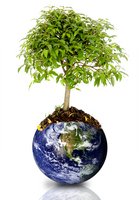Threatened-Animal-Species
Animal Extinction
Why are many threatened-animal-species victims of climate change, and how are affected-wildlife-populations suffering diminished ecosystems?
Global warming and the resulting climate change are the reason many scientists feel. A slight shift in temperature means a lot to animal groups who have spent years and years adapting to it.
What animal do we hear about the most lately? The polar bear.
Loss of habitat, or "ice" as in the case of the polar bears, is a prime example. Bears drowning in an endless sea of water is only part of the problem for them.
Conditions that become too dry too early, can dry up important breeding habitats for waterbirds during their peak spring mating season. There are other reasons as well for habitat-displacement.
The World Wildlife Fund put out a report of some of the most threatened-animal-species, and though not all reasons include direct climate change, at least five of them do. And, many of these species suffer at the hands of human actions directly.
Poaching, overfishing, and deforestation have a serious impact as well.
BLUEFIN TUNA
Until this species can recover from being terribly overfished in the Western and Eastern Atlantic, sushi-lovers and Chefs are being implored to not demand it and likewise serve it.
LEATHERBACK TURTLES
These turtles and their young are subjected to increasingly high temperatures that affect their nests and the sex of their offspring. A rapid reduction in male offspring would undoubtedly make them a threatened-animal-species.
Rising sea levels are impacting as well. Their population is rapidly declining and they are facing extinction in the Pacific.
GIANT PANDAS - SOUTH WEST CHINA
Their populations are becoming quite isolated in the mountain regions where they live, as their habitat is becoming quite fragmented. The World Wildlife Fund is working to create Reserves for their preservation.
INDIA - BANGLADESH TIGERS
It is estimated there are barely 3000 left in the world. Their habitat has been reduced by at least 40%.
Poaching and deforestation are the culprits, as well as climate change and resulting rising sea levels.
WALRUS ARCTIC PACIFIC
With more and more habitat loss, the Arctic Pacific walrus could soon be on the Endangered Species List.
Ice is relied on to rest, birth, nurse and protect young. With no ice floats, the walrus becomes another victim of climate change.
RIO DE JANEIRO PENGUINS
These penguins are being discovered washed up on beaches dead. They are becoming painfully thin because of having to search further and further out for food. The warming ocean currents are displacing the very fish they need to hunt and be able to feed themselves.
It is thought that because of the increasingly warmer ocean temperatures from climate change, over half of some 17 species of penguins have experienced an alarming decline in population.
ARCTIC POLAR BEAR
How much have we heard about current warming trends in the Artic? Plenty.
If they continue into the next century, the polar bear is currently vulnerable to extinction. The World Wildlife Fund is currently researching to understand thoroughly how climate change affects the bears. Solutions to getting them to adapt are what is needed.
It should be mentioned that the WWF also strives to protect bears stranded on land alot longer than usual due to lack of ice and because of oil and gas development.
Would you ever have thought about polar bears becoming extinct?
I never did, and as disturbing as it is about all other endangered species out there, the idea that there might never be polar bears in the future bothers me. Just something so "not right" about this.
There are certainly a mix of opinions on this subject.
Many believe that polar bears do not in fact depend only on seals for their food, and the fact that the sea ice is disappearing won't affect anything. They say the bears will be just fine. Certainly a topic for debate I'm sure.
Can Affected-Wildlife-Populations Simply Move?
Some species can, but research indicates that any available areas are already congested with other regular and displaced animal species, not to mention humans as well. Existing and future industrial development alone may not allow for this.
LIVES ARE OFF KILTER, OUT OF BALANCE
Research has shown that threatened-animal-species are affected by climate change in other ways.
Different species of animals affected by habitat-displacement, don't react to new places to live quite as easily and together as thought, which results in a type of disharmony.
Birds have altered their migratory times and routes in response to the shift in climate. This in turn affects their reproduction timing. Warmer temperatures awake hibernating animals much sooner than necessary.
The changing climate doesn't only affect the polar bears. There are many others as well, such as wolves, toads, caribou, other species of fish and birds too to name a very few.
Affected wildlife populations are indeed something to be concerned about.
For some reason though, it's how the polar bear has become a threatened-animal-species that really brings it home for me.
Leave Threatened-Animal-Species
Return To Global Warming Affects
Return To Carbon Footprint Home Page

Thanks For Your Support
Green Maven!

Popular Tips
Recycling Tips
Garage Sale Tips
Laundry Room
Green Travel
The Company Money
Eco-Baby Gift
Make A Diaper Cake







